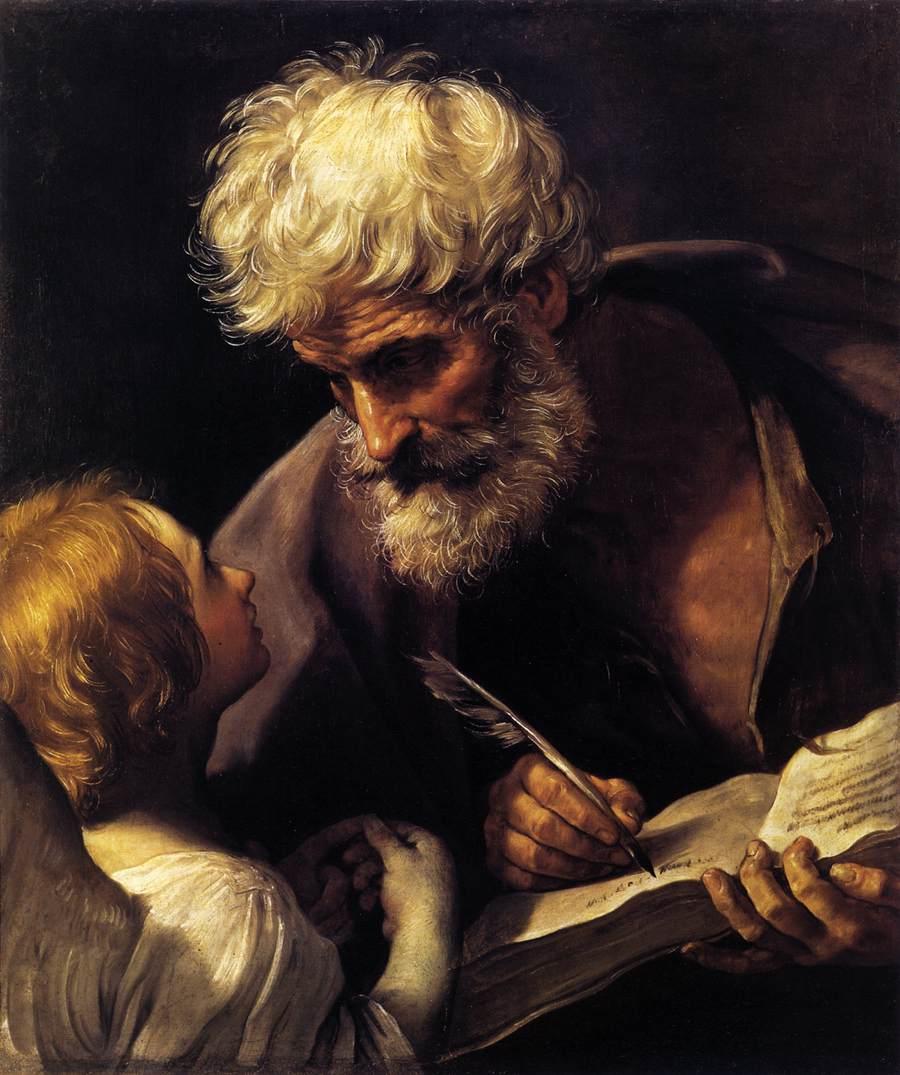Reading the Old Testament in the New: The Gospel of Matthew
Lesson One: Learning to Listen for Echoes: A New Approach to the New Testament

Lesson Objectives
- To understand how important the Old Testament is to reading and interpreting the New Testament.
- To learn what “typology” is and to appreciate its significance for reading the New Testament.
- To understand the relationship between the writers of the New Testament and other first-century Jewish interpreters of Scripture.
V. Study Questions for Lesson One
What did scholars used to believe about the way New Testament writers used the Old Testament? What do they now believe?
What are the three main assumptions about Scripture that the New Testament writers share with other first-century Jewish interpreters of Scripture?
What is pesher? Derash?
What is typology and why do we say that it is the basis for the "biblical worldview"?
For prayer and reflection:
The Gospel of Matthew’s account of the Resurrection is the last of nine Scriptures that are traditionally read during the Easter Vigil Mass on Holy Saturday night. Read all the readings for the Vigil, the Responses and, if possible the prayers that go along with the readings. Ask God to help you understand how the liturgy envisions the promises of the Old Testament being fulfilled in the New Testament, using this prayer that’s said during the Vigil after the reading of Genesis and the Psalm:
Almighty and eternal God,
Glorify Your Name by increasing Your chosen people
as You promised long ago.
In reward for their trust,
may we see in the Church the fulfillment of Your promise.
We ask this through Christ our Lord.
Amen
The readings for the Easter Vigil are as follows:
Genesis 1:1-2:2 Response: Psalm 104:1-2,5-6,10-14,24,35
Genesis 22:1-18 Response: Psalm 16:5,8, 9-11
Exodus 14:15 -15:1 Response: Exodus 15:1-6,17-18
Isaiah 54:5-14 Response: Psalm 30:2-6,11-13
Isaiah 55:1-11 Response: Isaiah 12:2-3, 4, 5-6
Baruch 3:9-15, 32-4:4 Response: Psalm 19:8-10,17
Ezekiel 36:16-17, 18-28 Response: Psalm 42:3,5; 43:3- 4
Romans 6:3-11 Response: Psalm 118:1-2, 16-17, 22-23
Matthew 28:1-10 (Year A) or Mark 16:1-7 (Year B) or Luke 24:1-12 (Year C)
Other Lessons
- Lesson Two: Son of David, Son of Abraham
- To read Matthew 1-2 with understanding.
- To learn the Old Testament history and background behind the quotations and allusions used in the prologue to Matthew’s gospel.
- To gain a fuller appreciation of Matthew’s depiction of Jesus as a “new Moses.”
- Lesson Three: ‘Not to Abolish, But to Fulfill’
- To read Matthew 3-7 with understanding.
- To understand the Old Testament background and allusions in Matthew’s depictions of John the Baptist, the Baptism of Jesus and His temptation in the wilderness.
- To understand the crucial importance of Jesus’ summary in the Sermon on the Mount: “Do not think that I have come to abolish the law or the prophets. I have come not to abolish but to fulfill.”
- Lesson Four: Healing and Restoration
- To read Matthew 8-10 with understanding.
- To understand the Old Testament background and allusions in Matthew’s depiction of Jesus’ healings and other miracles and the growing tensions with the scribes and Pharisees.
- To understand how Matthew uses evocations of select Old Testament prophets to convey that in Jesus, the long-anticipated “restoration” of Israel has begun.
- Lesson Five: Riddles of Rejection, Rock of Foundation
- To read Matthew 11-18 with understanding.
- To understand the Old Testament background to Jesus’ teaching in parables.
- To understand the deep Old Testament context by which Matthew conveys that Jesus is the long-awaited Messiah and the Church is the restoration of the Davidic Kingdom.
- Lesson Six: David’s Son, David’s Lord
- To read Matthew 19-28 with understanding.
- To understand the Old Testament background to Matthew’s depiction of Jesus’ entry into Jerusalem, His Passion and death.
- To understand the deep Old Testament context by which Matthew conveys that Jesus is the long-awaited “Son of David” and the “Son of God.”